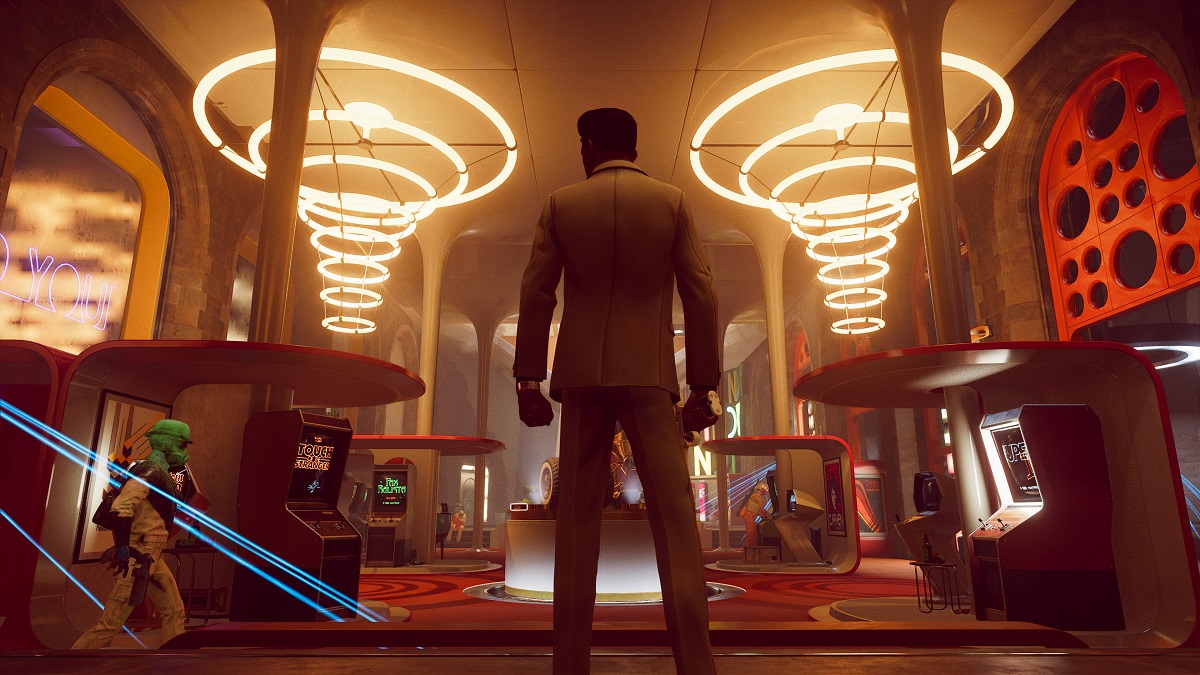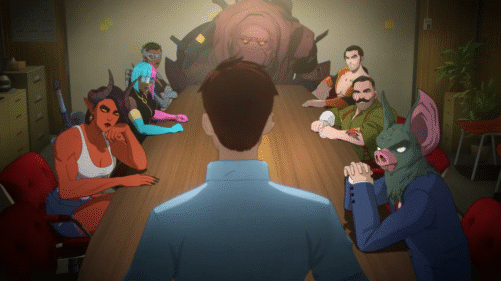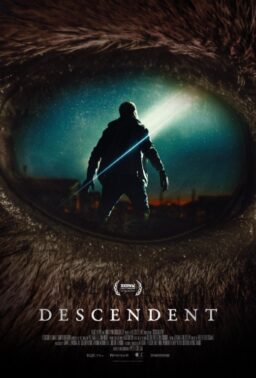Arkane Studios and Bethesda Softworks’ “Deathloop,” exclusively available on the PlayStation 5 and PC, is a hard game to describe. In the run-up to its release, quick-hit commercials that seemed to feature little to no actual gameplay made it look like something pretty traditional and familiar, although fans of Arkane’s ambitious “Dishonored” games knew that was unlikely. What was “Deathloop”? The advance buzz described a saga in which the player had to kill eight enemies over a series of repeating days a la “Groundhog Day” or “Edge of Tomorrow.” It sounded a bit like “Hitman.” But maybe with the roguelike elements of something like “Returnal”? Not exactly. With a mod, tongue-in-cheek style and original gameplay, it is one of those truly fun games that borrows little bits and pieces from inspirations but forms them into something that feels fresh again. It’s still incredibly difficult to explain this game to people even after I’ve played it for hours—that’s a good thing.
You step into the shoes of the tough-talking Colt, an assassin who has been caught in a time loop on an island called Blackreef in the 1960s. Every time Colt dies, the day restarts. Every time it ends, he wakes up on the beach again. Colt retains knowledge from the previous day but has to spend something gained through exploration called Residium to save weapons, trinkets, and superpowered slabs. His job is to figure out how to stop the loop, and he determines that there are eight targets, called Visionaries, spread across Blackreef—if he kills all eight in one day, the loop will end. Easier said than done.
There are four sections to Blackreef (Updaam, Karl’s Bay, Fristad Rock, and The Complex) that can be visited at four times of the day (Morning, Noon, Afternoon, and Evening). The structure of each setting remains largely the same but there can be drastic differences, including sections that are only open during one part of the day or enemies that are more prevalent in a section on another part of the day. Essentially, there are 16 “levels” to explore, gaining new powers, finding new weapons, and, most of all, learning the patterns of the visionaries for that final run that will break the loop when Colt kills eight of them.

Sounds easy enough, right? Well, Colt has an enemy that adds a neat new multiplayer aspect to the game. Her name is Julianna, and her job is to protect the loop. At any point, Julianna can jump into Colt’s path to stop his progress with a high-powered weapon, and the neat thing is that you can actually play Julianna. Yes, real players can jump into what feels like a traditional campaign and wreck your day. And you can do the same to others. If you want to just experience the story without the multiplayer chaos, you can change your settings to do so, but there will sometimes be an AI-controlled Julianna to try and take you out.
As for gameplay, it’s very malleable to user preference. I had almost full days with Colt wherein I never fired a bullet, stealthily moving around Blackreef and eliminating targets before they even knew I was there. However, there were also days when I unloaded some pretty powerful weaponry. There are also powers that can be gained by killing visionaries that really shape the gameplay. For example, one links targets in an area—shoot one and they all die—while another allows Colt to “Shift” from one location to another. At times, it reminded me of the amazing “Bioshock” series—power in my left hand, gun in my right.
The design of “Deathloop” also has a bit of a retro vibe that recalls “Bioshock” with its groovy fashion sense and unexpected art direction. It’s a game with a surprising visual twist around every corner, even though you’ve been in this section on this day many times before. It could be a door you never tried to open before or a section that you can now reach because you found the right slab. While it may seem like a relatively small, confined game at first, it opens up in consistently surprising ways, feeling more like a fully-realized world (something these developers are known for) than most other games. It’s also just a smart, funny game in terms of plotting and dialogue, delivered perfectly by Jason E. Kelley as Colt and Ozioma Akagha as Julianna.

Another thing I admired about “Deathloop” was how well it plays for non-hardcore gamers who may not have the time for today’s epic games. Sure, you could roam Blackreef for hours, but it’s an incredibly easy game to jump into for half an hour and jump out again, pushing Colt’s saga forward a little bit at a time. So many games place demands on gamers who don’t have the kind of free time it takes to complete something like “Assassin’s Creed Valhalla,” which can be like treading water after one plays for hours with little sense of progress.
“Deathloop” is a weird game. It has elements that feel familiar like those ripped from “Hitman” or “Bioshock,” but it’s also a wonderfully strange piece of work, one that rewards the patient and the curious. It’s a mystery of sorts but you’re not trying to piece together the identity of the killer but how best to fulfill that destiny yourself. There are times when it the ambition of the game can be a little out of reach with some inconsistent shooter mechanics and a few frustrating puzzles to solve. It might also be a little more traditional than some are expecting in that it’s not really a roguelike as much as it is about memorizing patterns in all four sections on all four times of day. And the fact that there is only one way to break the loop in the end will disappoint some hoping for true authorship of Colt’s fate.
However, the flaws of “Deathloop” are easy enough to overlook while you’re on Blackreef, pushing forward from clue to clue, trying to piece how to escape the loop. The history of gaming is built on deathloops—try to complete a level, die, try again (it’s why I often call “Edge of Tomorrow” the best video game movie of all time even though it’s not based on a video game). Arkane and Bethesda have made a game wherein the ultimate goal is to stop such a loop, to break free from going through the same cycle again and again. At its core, “Deathloop” takes the very concept of video games and tries to break it. If only more games had the same ambition.
Bethesda provided a review copy of this title on PS5.












